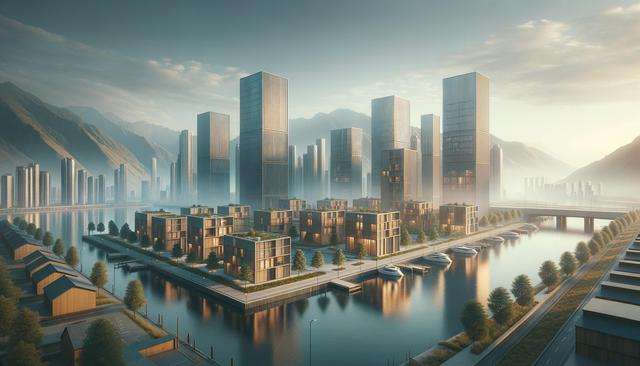The Rise of Metal Morton Buildings in Modern Construction
Metal Morton buildings have steadily gained popularity due to their structural integrity, customizable design, and long-term cost-effectiveness. Originally developed to meet agricultural and industrial storage needs, these buildings now serve a broader range of applications, including residential garages, commercial facilities, and even recreational spaces. The shift toward metal construction is driven by the need for materials that can withstand varying weather conditions while offering flexible layouts.
One reason for this growth is the efficiency of the construction process. These buildings are pre-engineered and fabricated off-site, which reduces on-site labor and minimizes construction delays. Additionally, metal components are recyclable, making Morton buildings an eco-conscious choice for sustainable construction. With the right insulation and ventilation systems, these metal structures can also achieve high energy efficiency ratings, contributing to lower operational costs over time.
Design Flexibility and Customization Options
One of the most appreciated features of metal Morton buildings is their adaptability. Whether you’re building a workshop, storage facility, or retail space, the design can be tailored to meet specific requirements. The interiors can be left open for maximum usable space or divided into rooms to suit functional needs. Customers have a wide range of finishes, colors, and structural add-ons to choose from, allowing them to align the building’s look with their brand or personal style.
Key customization options include:
- Various roof styles such as gable, gambrel, or monitor roofs
- Insulated panels for climate control
- Windows and skylights for natural light
- Overhead and walk-in doors in multiple sizes
- Interior partition walls for multi-purpose use
This level of flexibility has enabled Morton buildings to be used not just in rural settings, but also in suburban and urban developments. Whether it’s for a mechanic’s garage or a small retail outlet, these buildings can be adapted to serve the purpose with ease and style.
Durability and Maintenance Benefits
Durability is a hallmark of metal Morton buildings. Constructed from galvanized steel and other weather-resistant materials, these buildings are designed to withstand harsh conditions such as wind, snow, and heavy rain. Additionally, they are resistant to pests like termites, which can be a concern with traditional wood-framed structures. This makes them a practical option for long-term investment.
The maintenance requirements for metal buildings are generally low. The metal surfaces resist mold, mildew, and rust when properly coated, reducing the need for frequent repairs or repainting. Here are a few typical maintenance practices:
- Regular inspections for structural integrity
- Cleaning gutters and downspouts to prevent water damage
- Checking for any loose panels or fasteners
- Reapplying protective coatings when needed
These simple tasks help extend the life of the building while keeping it functional and visually appealing. The lower maintenance demand compared to other building types contributes to reduced ownership costs over time.
Applications Across Industries and Property Types
Metal Morton buildings are used in a wide variety of sectors due to their adaptability and cost-efficiency. In agriculture, they serve as barns, equipment storage, and livestock shelters. In commercial settings, they are often used for warehouses, auto shops, and even office spaces. The residential sector is also beginning to embrace these structures for garages, guest houses, and hobby workshops.
Some common applications include:
- Farm storage buildings for tractors and grain bins
- Retail storefronts with open-floor layouts
- Indoor sports facilities or community centers
- Residential garages with lofts or living quarters
- Emergency shelters and utility buildings for municipalities
The ability to design a building to exact specifications while maintaining cost-effectiveness has made Morton buildings a go-to solution for many industries. Their growing presence in rural and urban landscapes is a testament to their practicality and versatile design potential.
Cost Considerations and Long-Term Value
While the initial investment in a metal Morton building may seem significant, the long-term value often outweighs the upfront costs. These buildings are engineered for longevity, reducing the frequency of major repairs or replacements. Additionally, insurance premiums for metal structures can be lower due to their fire resistance and durability.
Several factors influence the overall cost of a Morton building:
- Size and complexity of the design
- Choice of finishes and structural features
- Site preparation and foundation work
- Insulation and energy efficiency upgrades
Over time, the operational savings from lower energy use, fewer repairs, and minimal maintenance contribute to a strong return on investment. Moreover, the resale value of properties with high-quality metal buildings tends to be favorable, especially when the structures are well-maintained and versatile enough to appeal to a broad range of buyers.
Conclusion: A Smart Choice for Durable and Adaptable Structures
Metal Morton buildings offer a compelling option for anyone seeking a reliable, customizable, and low-maintenance building solution. From agricultural operations to urban commercial setups, their design flexibility, structural strength, and cost-efficiency make them suitable for a wide variety of uses. Whether you’re planning a small garage or a large-scale warehouse, considering a Morton building can be a strategic move toward long-term functionality and value.


